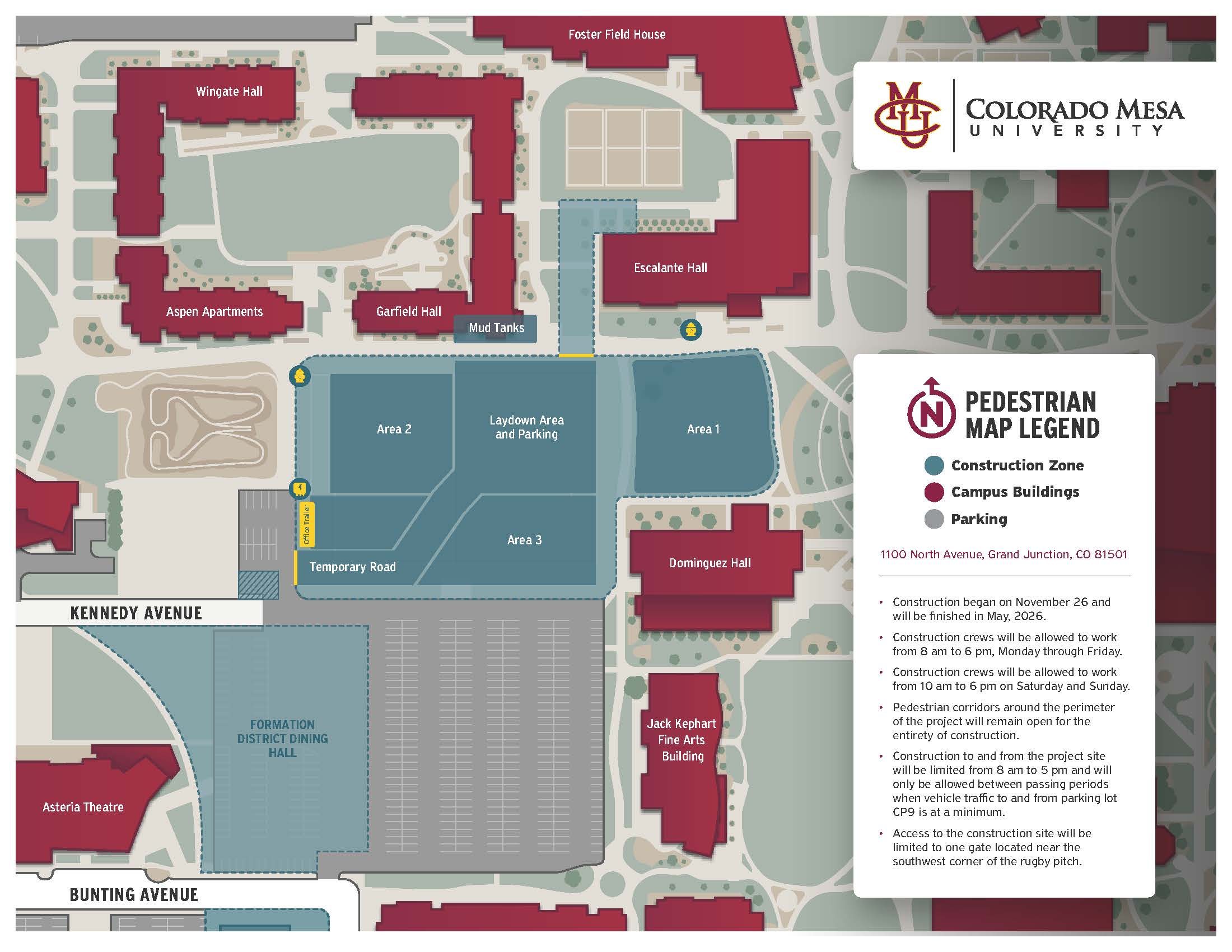Winter 2025 Geothermal Updates
CMU is expanding our geothermal system. With 130,000 ft. of pipe being installed more than 600 ft underground, this addition will help warm and cool an additional 250,000 sq. ft. of buildings. The map below shows impacted areas on the main campus.

Summer 2024 Geothermal Updates
5 videos (select below to browse)
Geo-Exchange System Evaluation Report
Colorado Mesa University's Geo-Exchange Technology is:
CMU geo-exchange system is a Heat Beneath Our Feet national feature project
In 2021 the Western Governors' Association launched the national Heat Beneath our Feet initiative to examine the nation's geothermal and geo-exchange technologies. Geo-exchange systems, like the one at CMU, showcase how heat from the earth can support the heating and cooling needs of western states. The initiative was launched on the campus of CMU because the university boasts one of the most remarkable geo-exchange systems anywhere in the world. At CMU, the soil beneath the feet of students holds the secret to energy savings for the institution, world-renowned sustainability efforts and lowered tuition.
CMU's geo-grid is made up of a complex network of geo-exchange systems and is a never-ending, renewable source of energy. From 500 feet beneath campus, the geo-exchange technology uses the cold winters and hot summers to exchange heat and cooling to maximize energy efficiency year-round.
Geo-exchange technology is an important part of CMU's sustainability efforts. To expand its energy saving potential, CMU embarked on a true engineering marvel where the system is interlocked with the campus's Olympic-sized swimming pool, irrigation system and domestic water needs using these sources as a heatsink. These technical engineering solutions make the system not just efficient, but innovative, and has saved CMU students millions of dollars by allowing the university to keep tuition rates low even when electricity and heating and cooling prices are high.
As the nation is in its early stage of the adoption of geo-exchange potential, CMU has long been saving energy and has plans to further expand the system in the coming years. The expansion will connect additional buildings, additional geo-grid fields and will incorporate solar voltaic energy to further reduce electricity use on campus.
Achieving the completion of the CMU geo-grid project will deliver an example of what the future of the nation's energy diversity can look like. The project provides value to students as well as all stakeholders who contribute to the university by helping the long-term sustainability and affordability of the campus and its energy portfolio.
